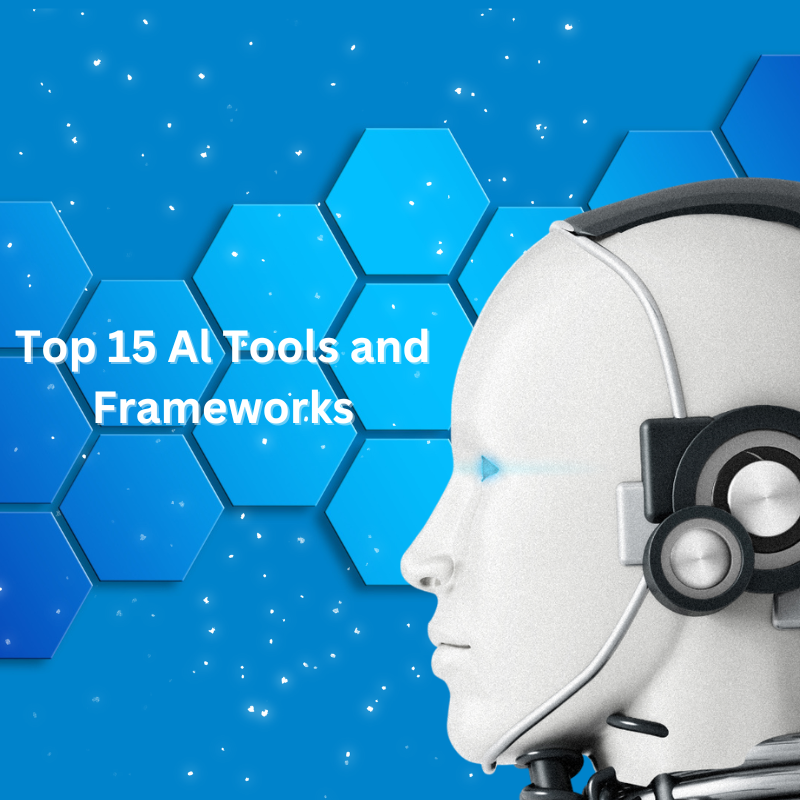Top 15 Al Tools and Frameworks
In today’s fast-paced business environment, it is essential to optimize workflow processes to stay competitive. One of the ways to achieve this is by using AI tools. With the power of Artificial Intelligence, you can automate repetitive tasks, make data-driven decisions, and streamline communication channels. This article will introduce you to some of the essential AI tools. This can revolutionize your workflow and help you achieve more in less time.
Need for AI Tools and Frameworks

Artificial intelligence (AI) is a rapidly growing field with immense potential for a wide range of applications. This ranges from personalized medicine to intelligent transportation systems.
AI tools and frameworks are essential for developing and deploying effective machine learning models. This can accurately and efficiently analyze large volumes of data, recognize patterns, and make predictions or decisions.
These tools and frameworks offer a range of functionalities, including neural network architectures, optimization algorithms, data preprocessing, and visualization tools. This enables developers and data scientists to build, train, and deploy high-performing models.
The demand for AI-powered solutions is growing. This means the need for AI tools and frameworks will only grow in the coming years.
Top 15 AI Tools and Frameworks
1. TensorFlow
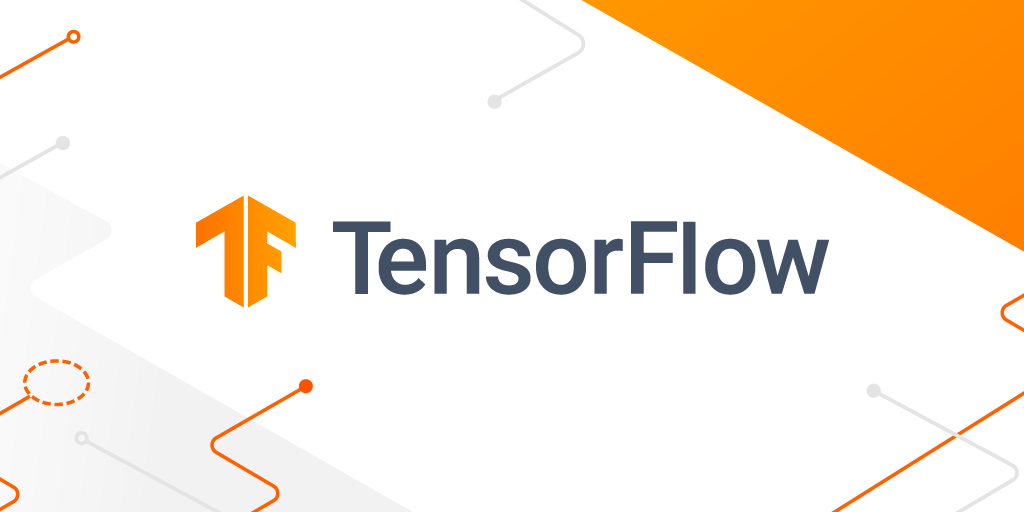
TensorFlow is a widely popular open-source platform for building and deploying machine learning models. It is developed and maintained by Google and is used by researchers, developers, and businesses for various AI-related tasks. This includes natural language processing, image classification, and speech recognition. It can also act as part of a text prompt and research project.
One of the key benefits of TensorFlow is its flexibility, as it supports both deep learning and traditional machine learning techniques. It also offers a wide range of pre-built models and tools. This makes it easier for developers to get started with their projects.
Additionally, TensorFlow provides excellent scalability, enabling users to train models on a single device. They distribute the workload across multiple devices, including GPUs and TPUs. This capability allows for faster processing and improved performance.
TensorFlow also offers a user-friendly interface. This enables users to visualize the training process and monitor the progress of their models in real-time. It also provides extensive documentation and resources, making it easier for developers to learn and use the platform effectively.
2. Keras

Keras is a high-level neural network API that is written in Python. It can run on top of TensorFlow, CNTK, or Theano. It is designed to enable fast experimentation with deep neural networks and is known for its simplicity and ease of use.
One of the key benefits of Keras is its user-friendly interface. This enables users to build complex models quickly and easily. Keras offers a range of pre-built layers and models, making it easier for developers to get started with their projects. It also provides a range of utilities and tools, including optimizers, callbacks, and loss functions.
Keras supports both convolutional and recurrent neural networks and provides a range of tools for working with image and text data. It also offers seamless integration with TensorFlow, enabling users to take advantage of the scalability and performance of the underlying platform.
Additionally, Keras provides excellent support for transfer learning. Thus, enabling users to take pre-trained models and adapt them to their specific use case. This capability makes it easier for developers to build high-quality models with limited training data.
3. PyTorch

PyTorch is an open-source machine learning library that is widely used for building deep learning models. Developed by Facebook AI Research, PyTorch offers a simple yet powerful platform for researchers and developers. They can create and train machine learning models.
One of the key advantages of PyTorch is its dynamic computational graph. This allows for easier debugging and flexibility in the model-building process. Additionally, PyTorch offers a wide range of pre-built functions and modules that make it easier to build complex neural networks.
PyTorch also supports distributed training across multiple GPUs, making it an ideal choice for large-scale machine learning projects. The library is designed to be easy to use. It has a growing community of developers who contribute to its ongoing development.
4. OpenCV
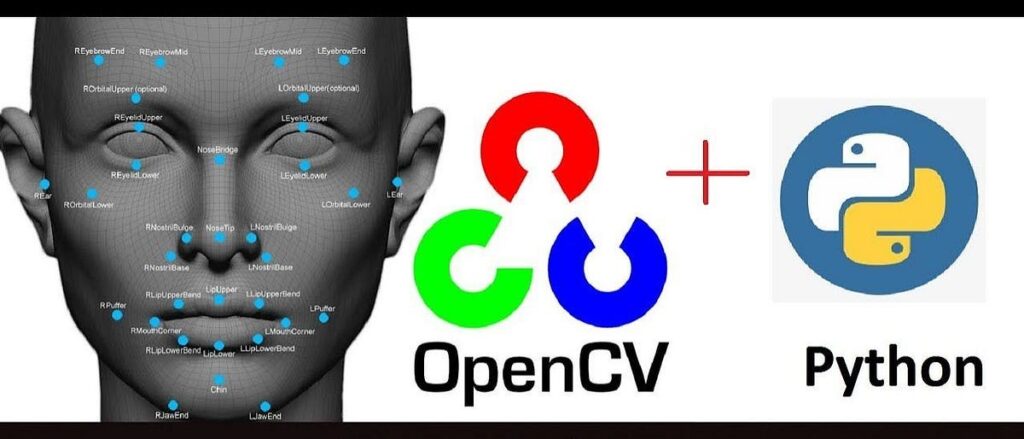
OpenCV (Open Source Computer Vision Library) is a popular open-source computer vision and machine learning software library. It provides a range of tools and algorithms for image processing, computer vision, and machine learning applications.
One of the key advantages of OpenCV is its ability to run on multiple platforms, including Windows, Linux, and macOS. It also supports multiple programming languages such as C++, Python, and Java, making it a versatile tool for developers and researchers.
OpenCV provides a range of functions for image and video processing, including image filtering, color conversion, feature detection, and object tracking. It also offers machine learning modules such as support vector machines (SVMs), decision trees, and neural networks.
OpenCV is widely used in various applications such as robotics, self-driving cars, medical imaging, and security systems. Its extensive documentation and a large community of developers make it a popular tool for computer vision and machine learning projects.
5. Caffe

Caffe is an open-source deep learning framework. This is particularly useful for convolutional neural networks (CNNs) and other deep learning architectures. It was originally developed by the Berkeley Vision and Learning Center (BVLC) and is now maintained by the community.
Caffe is known for its speed and efficiency, which is why it is commonly used in computer vision tasks. This includes object detection and recognition, image segmentation, and even facial recognition.
One of the key advantages of Caffe is its modularity. This allows users to easily swap in and out different layers, such as convolutional, pooling, and activation layers. This makes it easy to experiment with different network architectures and configurations. Additionally, Caffe has a simple and intuitive interface, making it accessible to both researchers and developers.
Caffe also supports a wide range of input data formats, including images, videos, and audio. It also has a powerful visualization toolkit that allows users to easily visualize and debug their models. Furthermore, Caffe is compatible with a variety of languages, including Python, MATLAB, and C++.
6. Generative AI

Generative AI refers to a type of artificial intelligence. This is used to create or generate new content, such as images, text, music, or create video. Generative AI systems use algorithms and neural networks to analyze existing data and learn patterns. This can then be used to create new content that is similar to the original data.
One of the most popular types of generative AI is the generative adversarial network (GAN). This consists of two neural networks that work together to generate new content. One network, known as the generator, creates new content based on the patterns it has learned from existing data.
The other network, known as the discriminator, evaluates the new content and provides feedback to the generator. This can then use this feedback to refine its output.
Generative AI has many potential applications. This includes art, music, and design, as well as in fields such as medicine and finance. For example, generative AI can be used to create realistic medical images, like X-rays or MRI scans. This can help doctors make more accurate diagnoses.
In finance, generative AI can be used to generate more accurate financial forecasts, which can help investors make more informed decisions.
While generative AI has many potential benefits, it also raises ethical and societal concerns. For example, we can use it to create convincing fake images or videos. This can be used to spread disinformation or manipulate public opinion. As such, it is important to use generative AI responsibly and to consider the potential impacts of its use.
7. Microsoft Cognitive Toolkit (CNTK)

Microsoft Cognitive Toolkit (CNTK) is an open-source deep learning toolkit developed by Microsoft Research. It allows users to train, evaluate, and deploy deep learning models for natural language processing, image recognition, and speech recognition. CNTK supports multiple programming languages, including C++, Python, and C#.
CNTK is known for its high performance, scalability, and ease of use. It is designed to work with multiple GPUs and supports distributed training across multiple machines. It also provides built-in support for popular deep learning models. This includes convolutional neural networks (CNNs), recurrent neural networks (RNNs), and deep belief networks (DBNs).
CNTK’s performance is especially notable. It has been shown to outperform other deep learning frameworks such as TensorFlow and PyTorch in certain tasks. This is due to its highly optimized code and the ability to take advantage of the computational power of GPUs.
CNTK also includes pre-trained models and a set of tools for data preparation and model evaluation. Its development is ongoing, and Microsoft continues to add new features and improvements to the toolkit.
8. Theano

Theano is an open-source numerical computation library that is primarily used for building and training deep neural networks. It allows developers to define, optimize, and evaluate mathematical expressions involving multi-dimensional arrays efficiently.
Theano is particularly useful for complex mathematical operations and is optimized for both CPU and GPU computing. It was developed by the Montreal Institute for Learning Algorithms (MILA) at the University of Montreal. It is widely used in academia and industry for machine learning research and applications.
Theano provides a high-level interface for building and training neural networks, making it a popular choice for deep learning practitioners.
9. Torch

Torch is an open-source machine learning library and framework that is primarily used for building and training deep neural networks. It provides a wide range of building blocks and tools for constructing and deploying deep learning models. This includes modules for automatic differentiation, optimization algorithms, and a powerful GPU-accelerated tensor library.
The torch was originally developed by Facebook’s AI Research group (FAIR). It has since gained popularity in both academia and industry for its ease of use, flexibility, and powerful capabilities. Torch is particularly well-suited for building recurrent neural networks (RNNs). It is used in a variety of applications, such as natural language processing, speech recognition, and computer vision.
Torch also provides a Lua-based scripting language for rapid prototyping and experimentation. Thus, making it a popular choice among deep learning researchers and developers.
10. Apache MXNet

Apache MXNet is an open-source deep-learning framework that is designed for both efficiency and flexibility. It supports multiple programming languages, including Python, C++, R, and Julia. It can run on various devices, from smartphones to cloud infrastructure.
MXNet uses a symbolic programming approach. This allows users to define, optimize, and debug their neural networks at a high level of abstraction. Additionally, MXNet supports distributed training across multiple GPUs and servers, making it an excellent choice for large-scale deep-learning projects.
With its scalability, flexibility, and ease of use, MXNet is a popular choice among researchers and practitioners in the AI community.
11. IBM Watson

IBM Watson is a platform designed to help businesses and individuals. It is powered by AI and uses natural language processing and machine learning technologies. These technologies help to solve complex problems.
The platform offers a range of tools and services. This includes chatbots, speech-to-text and text-to-speech services, image and video recognition, and predictive analytics.
One of the key features of IBM Watson is its ability to analyze vast amounts of unstructured data. This can include data such as text, images, and videos, and derive insights and predictions from them.
This tool is ideal for businesses. It helps them gain a better understanding of their customers, market trends, and other key factors. This information can improve their bottom line.
IBM Watson offers a range of developer tools and APIs. This makes it easy for businesses to integrate its capabilities into their existing workflows and applications.
Developers can use these tools to build and deploy custom AI solutions. They do not need to worry about the technology beneath it. This helps them tailor it to their specific needs.
12. H2O.ai

H2O.ai is an open-source software for data science and machine learning. This enables businesses to develop and deploy machine learning models quickly and easily. It is designed to be scalable and user-friendly, allowing users to build models with just a few lines of code.
H2O.ai provides a range of powerful machine-learning algorithms, including deep learning, generalized linear modeling, and gradient boosting. The software also offers support for a range of data types and sources. This includes Hadoop Distributed File System (HDFS) and Amazon S3 and can be run on-premises or in the cloud.
Additionally, H2O.ai offers a range of tools and features for model training, testing, and deployment. This makes it an essential AI tool for businesses of all sizes.
13. RapidMiner
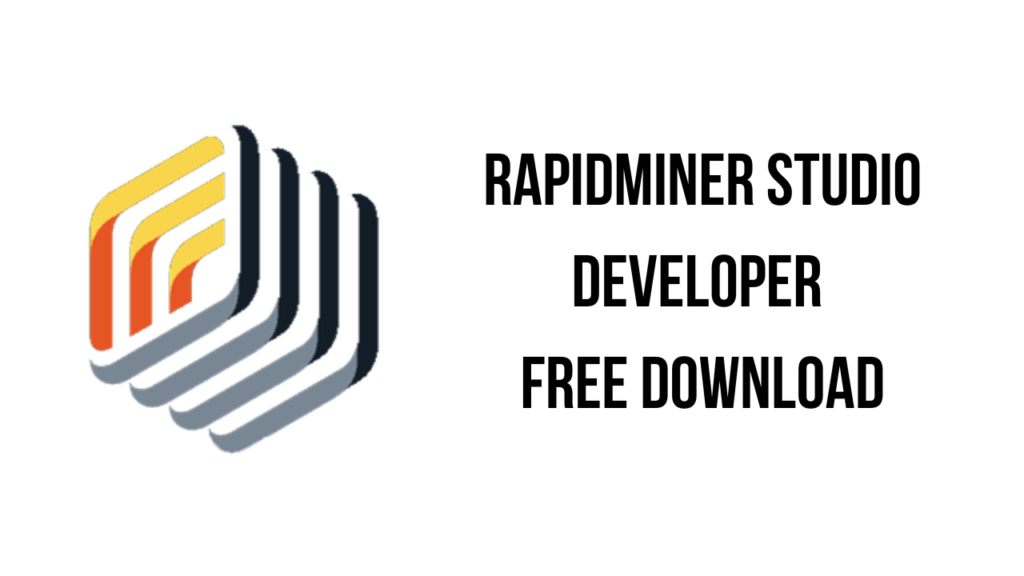
RapidMiner is an open-source machine learning framework that provides a visual interface for data preparation, model creation, and evaluation. With its user-friendly interface, RapidMiner simplifies the complex process of data mining. This makes it accessible to both data analysts and business users.
The framework supports various machine learning algorithms, including regression, classification, clustering, and association rule learning. RapidMiner also offers several data integration and preprocessing tools that help in data cleaning, transformation, and feature engineering.
One of the significant advantages of RapidMiner is its ability to work with a variety of data sources. This includes CSV, Excel, and databases. It also has built-in support for big data technologies such as Hadoop, Spark, and NoSQL databases.
RapidMiner offers both an open-source and a commercial version. The commercial version provides additional features, such as advanced analytics, real-time scoring, and enterprise-level support.
14. Data Robot
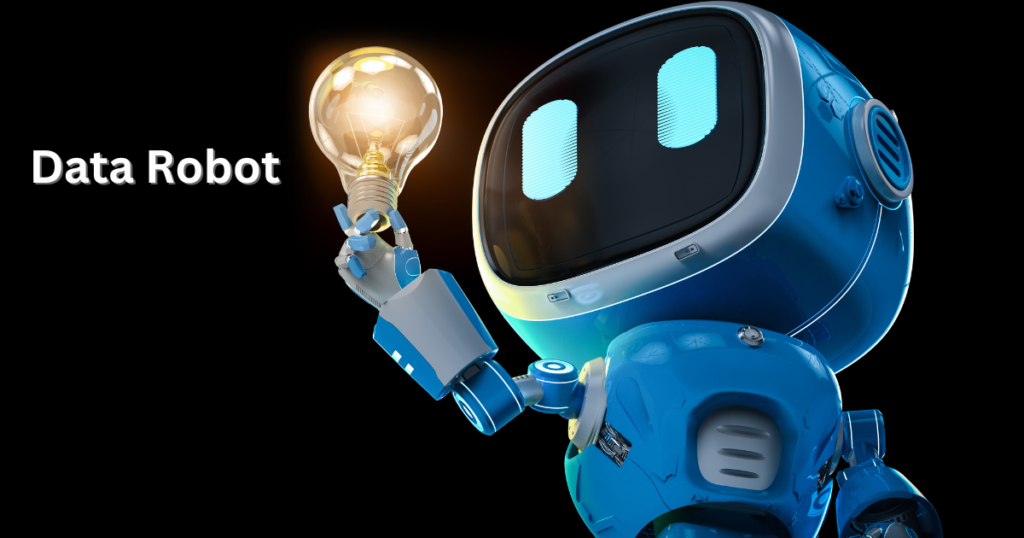
DataRobot is an AI platform that helps automate and accelerate the building, deployment, and maintenance of machine learning models. The interface is designed for user-friendliness. It allows data scientists and business analysts to work together on data preparation, feature engineering, model selection, and deployment.
DataRobot enables users to quickly upload their data. They can select from numerous algorithms and generate the ideal model for their purpose. The platform also provides explainable AI, model monitoring, and other advanced features to ensure the accuracy and transparency of the models.
15. Alteryx

Alteryx is a powerful platform for data analysts and scientists. This enables them to quickly and easily prepare, blend, and analyze data from a variety of sources. The platform provides many tools for data cleansing, transformation and enrichment. Additionally, it offers machine learning and predictive analytics capabilities.
Alteryx makes it simple for users to create and share data models and predictive algorithms. Coding and programming skills are not necessary. The platform also provides a range of automation and collaboration tools, allowing teams to work together more efficiently and effectively.
16. Google Cloud Machine Learning Engine
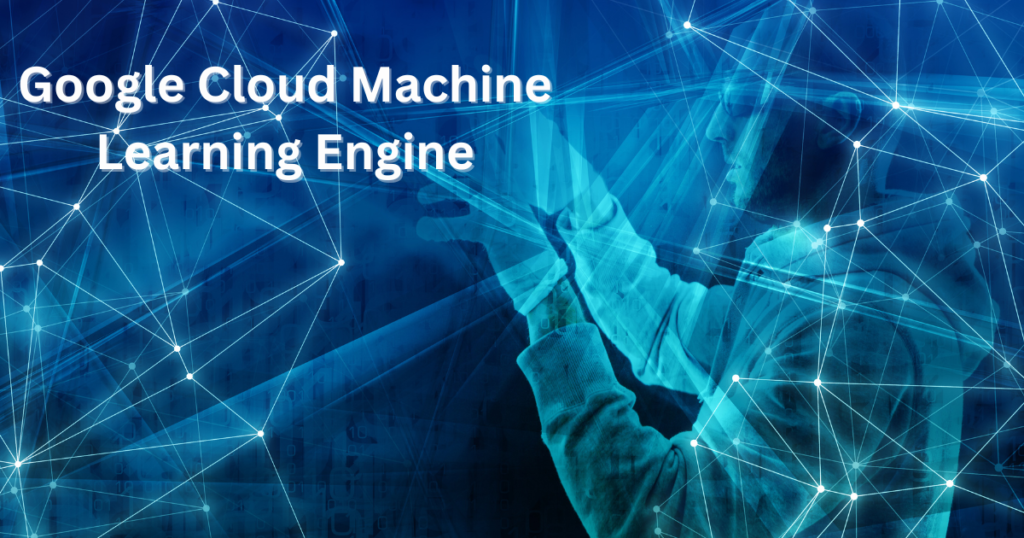
Google Cloud Machine Learning Engine is a cloud-based platform. This allows users to easily build and deploy machine learning models at scale. It offers a fully-managed environment that supports popular machine learning frameworks such as TensorFlow, Keras, and Scikit-learn.
Google Cloud Machine Learning Engine has an important feature. It can adjust resources according to the workload. It can scale up or down as needed. This makes it a cost-effective option for both small and large projects.
It also provides access to pre-built machine learning models through Google’s AI platform. This allows users to quickly deploy and use these models in their own applications.
17. Amazon SageMaker
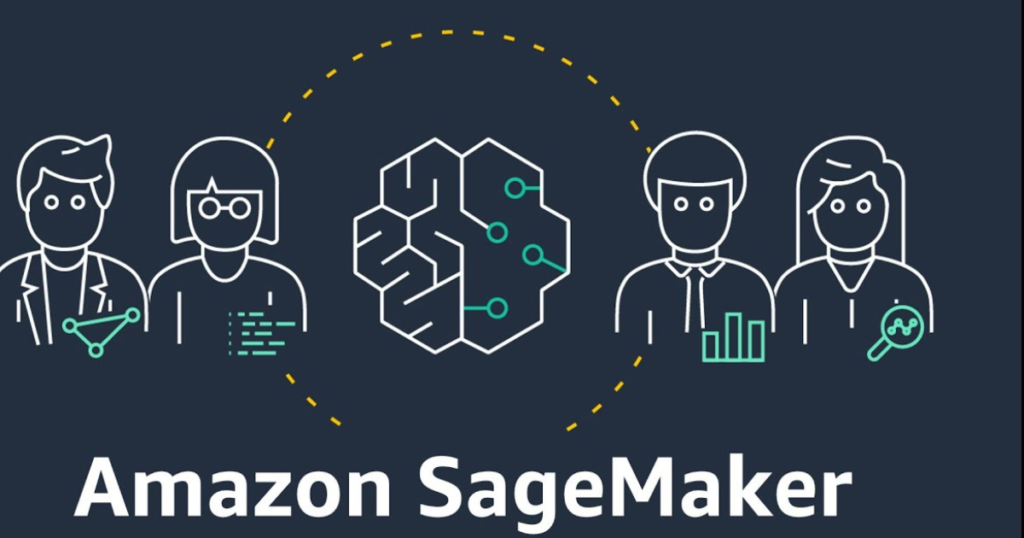
Amazon SageMaker is a fully managed machine learning service provided by Amazon Web Services (AWS). It provides tools to build, train, and deploy machine learning models quickly and easily. Amazon SageMaker includes a number of built-in algorithms and allows users to bring their own algorithms or frameworks.
It also offers automatic model tuning, data labeling, and data processing services, among other features. With Amazon SageMaker, developers and data scientists can easily create and manage their machine-learning workflows. They can do this without worrying about infrastructure and scalability issues.
18. TensorFlow Serving

TensorFlow Serving is an open-source software library for serving machine learning models. It is designed to serve TensorFlow models in a production environment. This allows for efficient and scalable deployment of models in distributed systems.
TensorFlow Serving allows users to easily deploy machine learning models to production. It provides a flexible and efficient infrastructure for serving predictions. This system supports many deployment scenarios.
It can serve models from multiple versions and manage both online and batch prediction requests. Additionally, it can integrate with other systems and platforms.
TensorFlow Serving is a powerful tool for organizations looking to deploy machine learning models at scale.
19. NVIDIA DIGITS

NVIDIA DIGITS is a deep learning platform that helps users design and train deep neural networks. It offers a user-friendly interface that simplifies the process of building and deploying deep learning models.
DIGITS supports popular deep learning frameworks such as TensorFlow, PyTorch, and Caffe, and it can run on NVIDIA GPUs or CPUs. DIGITS is useful for image and speech recognition, natural language processing, and other deep learning applications.
With DIGITS, users can rapidly prototype and train models, and then deploy them to production environments. It also provides features for data visualization, monitoring, and management. This makes it a powerful tool for building and deploying deep learning solutions.
20. BigDL

BigDL is an open-source distributed deep-learning library for Apache Spark. This allows users to leverage existing big data infrastructure to accelerate deep learning workflows. It is built on the Scala programming language. Thus, providing support for a wide range of deep learning models and frameworks, including TensorFlow and Keras.
BigDL enables developers to scale deep learning applications and models to hundreds or thousands of CPUs or GPUs. This makes it a popular choice for organizations working with large datasets and computationally intensive tasks.
21. Deeplearning4j

Deeplearning4j is an open-source, distributed deep learning framework designed for enterprise-level projects. Java is the programming language used to write it, and it is compatible with other JVM-based languages like Scala and Kotlin.
It allows for fast, scalable, and efficient deep-learning computations. Thus, supporting a wide range of neural network architectures such as convolutional, recurrent, and feedforward networks. With Deeplearning4j, developers can easily build, train and deploy machine learning models for a variety of use cases.
Conclusion
AI tools can be a game-changer in optimizing workflow processes. AI-powered tools have the capability to automate repetitive tasks, make informed decisions, and enhance efficiency. These tools span various areas, such as project management, content creation, and customer service to data analytics.
AI tools can help you to stay ahead of the competition. They can also help you reach your goals more efficiently. Incorporating the right AI tools into your workflow is key.
Frequently Asked Questions (FAQs)
1. What is an AI tool?
An AI tool is software that uses machine learning algorithms and techniques to perform tasks that typically require human intelligence, such as natural language processing, image and speech recognition, and predictive analytics. It can automate and optimize various business processes, improve decision-making, and provide valuable insights.
2. What is an example of an AI tool?
An example of an AI tool is TensorFlow, a popular open-source platform for building and deploying machine learning models. Various applications such as image recognition, natural language processing, and predictive analytics widely use it in research and industry.
3. What are the 4 types of AI?
The four types of AI are reactive machines, limited memory, theory of mind, and self-awareness. Reactive machines can only respond to current situations, limited memory can remember past events, theory of mind has the ability to understand the emotions and thoughts of others, and self-aware AI can understand their own emotions and thoughts.

